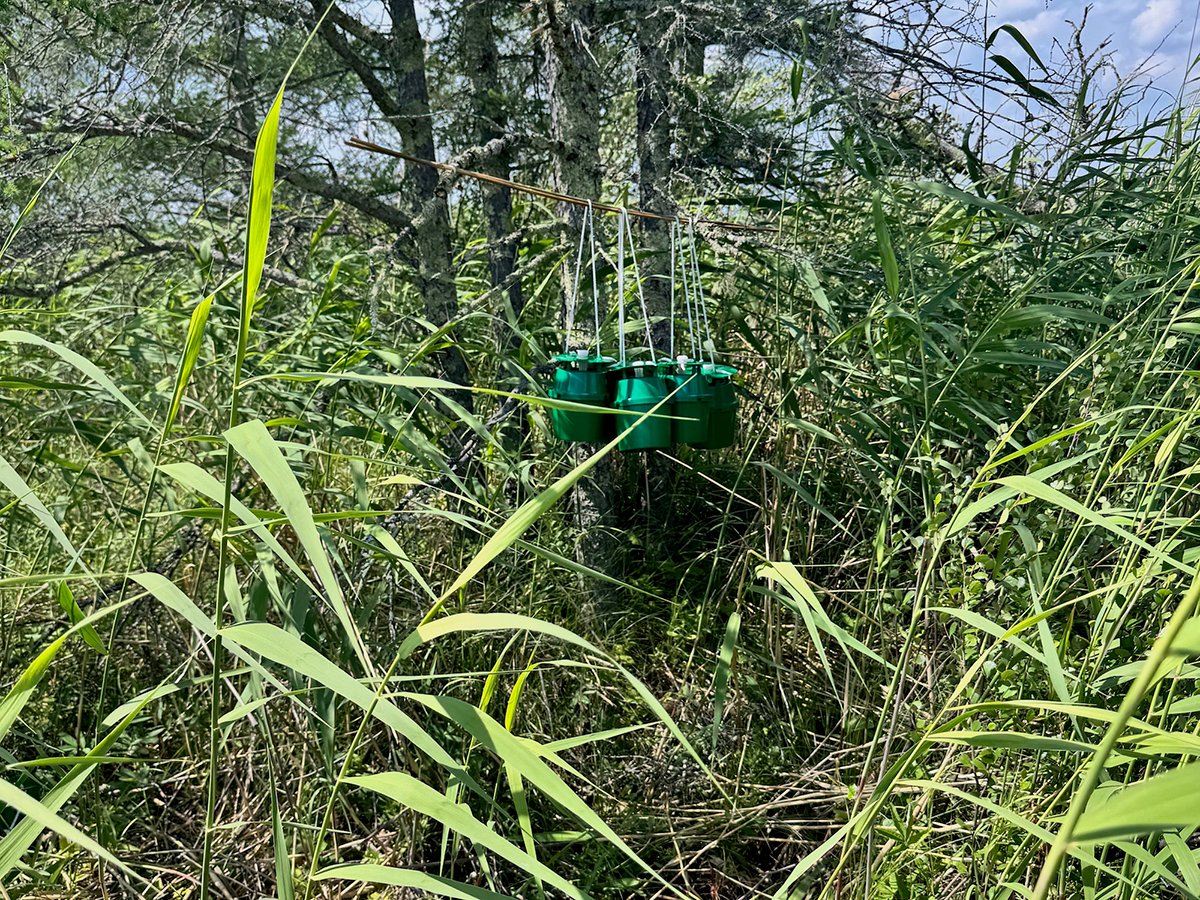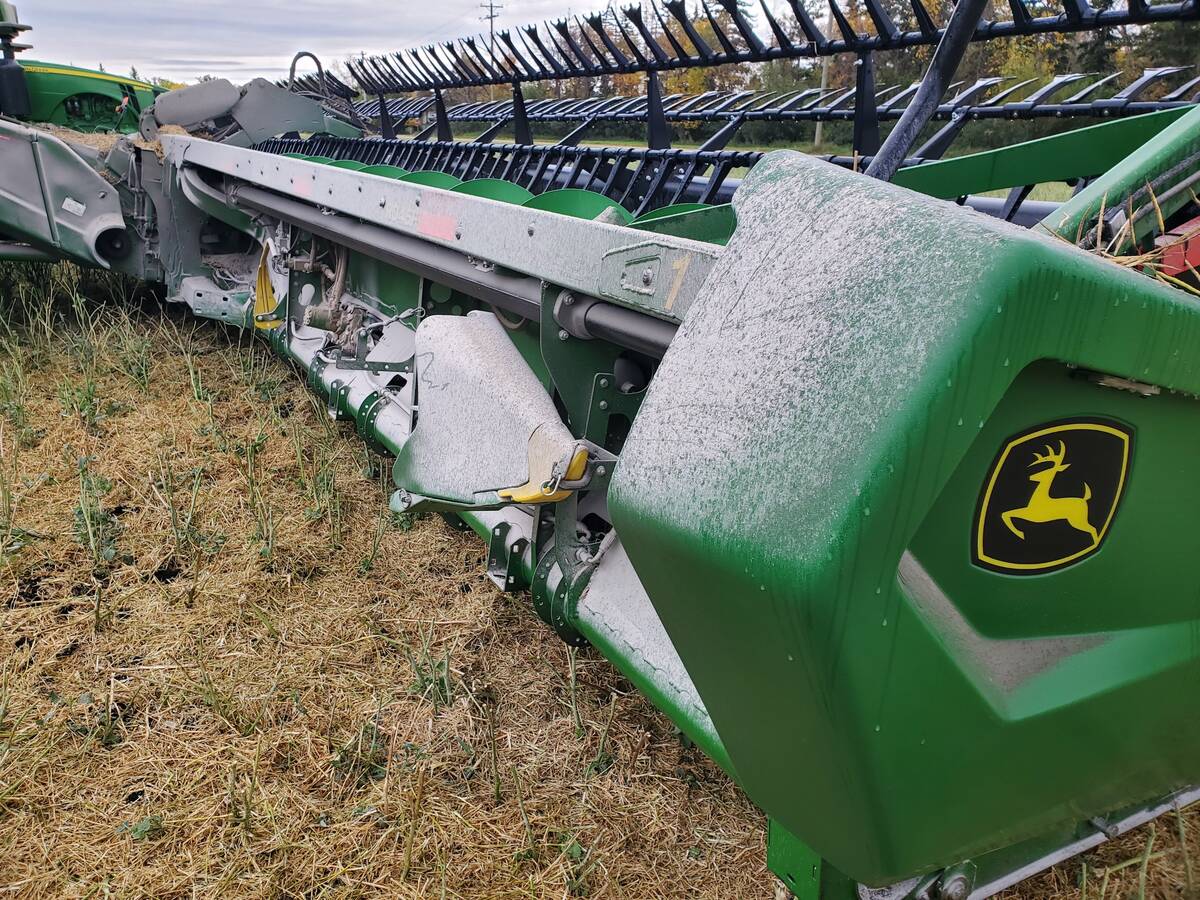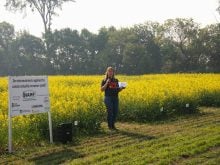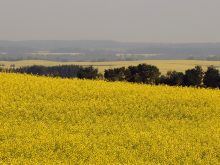Some canola growers in Alberta and Saskatchewan may have noticed their combine is coated with white powder after working a day in a canola field this year.
The reason is prairie crops have been widely infected with powdery mildew, which is a white fungal growth that coats the stems and leaves of canola plants.
As combines work their way through an infected field, they create a cloud of white dust that settles on the equipment and poses an increased risk of machinery fires.
Read Also

Worm devastates northern wild rice harvest
In the past five years, harvesters in various parts of northern Saskatchewan have been affected by wild rice worms, which destroy crop and devastate peoples’ livelihoods.
“Wet conditions lead to more powdery mildew than we normally would see,” says Kaeley Kindrachuk, agronomy extension specialist at Sask Oilseeds.
“It causes a film that would end up on equipment, and we are advising producers to clean their equipment regularly, at least once or twice a day. It’s just to reduce the risk of fires.”
The mildew is caused by a fungus, but because it occurs to so late in the season, it doesn’t have much, if any, effect on crop yields, which Kindrachuk adds is part of the reason why not too much research has been done on it.
“We don’t have a ton of research on it. We don’t see it every year. But the problem is the fire risk.”
Sask Oilseeds is aware of several incidents of combine fires this fall attributed to buildups of powdery mildew.
One Alberta equipment dealer sent out a tweet on X (formerly Twitter) warning producers that “dry spores mixed with chaff accumulate on hot machine parts, igniting via static electricity or friction.”
The powder can also plug air filters, restricting engine performance.
Environmental conditions this year across Alberta and Saskatchewan were ideal for the mildew to develop and has caught the attention of crop specialists across the Prairies.
“In the last couple of weeks, there’s been a giant email chain among plant pathologists and agronomists, just trying to see where we’re at with it,” Kindrachuk says.
“I’ve heard from just about every area in Saskatchewan and Alberta as well. It’s kind of everywhere this fall.”
However, the problem is much less significant in Manitoba.
“I don’t find it a lot in the fields in Manitoba,” says Sonia Wilson, oilseeds specialist at Manitoba Agriculture.
“It’s more in Saskatchewan and Alberta this year. I haven’t heard of any severe cases here. It’s fairly uncommon to have severe powdery mildew on canola. We would typically see it on other crops first, such as sunflowers, for example.”
The Canola Council of Canada agrees that powdery mildew is not likely to cause significant yield losses, but it can impede harvest operations in ways aside from increasing the risk of machinery fires.
On its website, the council said that the mildew coating seemed to keep canola stems green, even when seeds were ready to harvest, which can make for slow going with the combine.

It also notes that herbicide specialists expect the mildew coating would impede uptake and activity of a pre-harvest desiccant. Because the mildew is hydrophobic, it can prevent penetration of Reglone or other dessicants into the plant tissues.
The Canola Council website adds that farmers with this problem may choose to swath rather than straight combine fields.
Because it is relatively uncommon, powdery mildew can sometimes be misidentified, adds Wilson.
“It can sometimes get mixed up with sclerotinia, which also appears as a white mould. This year we had pressure from it (in Manitoba). Sometimes it can be heard to tell the difference between those.”
However, sclerotinia is unlikely to cause the same fire risk to combines as powdery mildew because it produces less of a buildup on stems and generates less dust when harvested.
“it generally won’t coat the whole stem in the same way a severe powdery mildew would,” Wilson says.


















